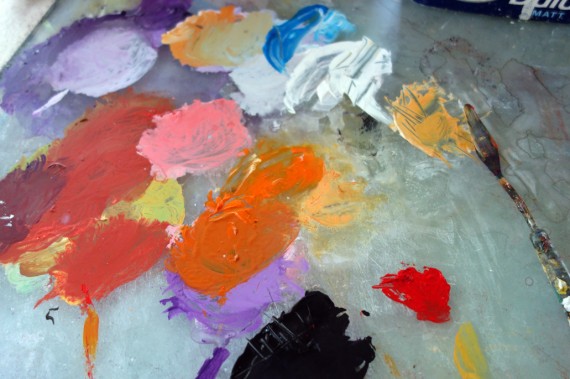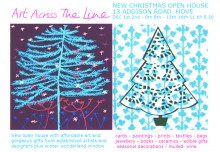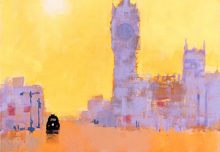ARTIST’S ACRYLIC PAINT
In the late 50’s we saw these strange words describing some of the latest art from the USA, ‘acrylic on masonite’. What was masonite and what were acrylics? Masonite, we found, is a trade term and actually what the USA call, what we Brits call, hardboard. But what were acrylics? Maybe it is a new kind of paint, something like emulsion house-paint? We learned that it was artist’s acrylic paint. But we didn’t have access to it here. All we had was oil-paint, water-colour, and pastels.
Rowney introduced Cryla Colour into the UK in 1963. That was the first time British artists could experiment with the new medium, artist’s acrylic paints. Or so we are told, but not so!
In fact another company called Spectrum came along to the art college where I was a student a couple of years earlier. They also had seen the potential market for acrylics and wanted to see if artists would use the system. Spectrum provided tubs of the basic acrylic medium rather than finished paint in tubes. They intended to supply schools with the medium to be mixed with powder colour paints. And they asked if a rather small group of six elite students would try using the stuff free of charge to see how it worked. Free paint? Of course we jumped at the chance.

acrylic paint
We loved it! We found all sorts of benefits.
Firstly, the medium came in big gallon sized tins. We bought powdered pigment from artists suppliers in London and mixed them together. We chose earth colours made from ground up rock because they were not toxic. That also meant that they were much cheaper. We made paint, just like the old masters. Then we experimented with other ingredients.
A second surprising benefit came when we mixed it with sand, or flour, or chalk to extend the range of possibilities. It enabled us to make great big thick textured paintings when we painted onto hardboard or home-made sacking canvases.
Thirdly, we found that the medium was very sticky, and it dried clear, so we used it as a glue to make collages.
The fourth major factor, after ‘almost free’, ‘thick’ and ‘sticky’, was that the medium mixed with water. Oil paints are thinned with turps or white spirit which smells and takes ages to dry. Acrylic medium dries very much quicker and didn’t stink. My paint was no longer a toxic hazard for our baby either.
Free sticky bland and safe.
So I had a supply of free, sticky, bland, and safe paint. What else? The quick drying property was quite significant. When an artist paints in oils they can return to a section of the artwork over and over again as the picture progresses and rework wet into wet. Again, with quicker drying watercolour, if the artist wants to re-work an area then they can wet the painted surface to re-activate the under-colour. But that is not so with acrylic. You just couldn’t do that. A couple of my fellow students with water-colour expertise, reputation, and loyalty, abandoned the experiment.
The remaining few of us soldiered on. We found that as soon as the paint was dry you could over-paint without the under-colour being affected. This allowed new creative effects previously unknown. ‘Glazes’ of thin almost transparent paint washes over quick-drying previous thin paint washes were a wonderful surprise. ‘Scumble’ where dryish colour is lightly scrubbed over textured dry paint was an easy every-day option and not a difficult trick. The introduction of thick troweled-on texture achieved by mixing in very cheap Fullers Earth powder or sand as a filler made exciting painterly effects possible. And the thick paint was stable, it didn’t get all wrinkly as it dried slowly like thick oil paint. Glueing torn paper from magazines, or material offcuts, added new elements quickly. And you could combine the effects in your artwork. You could do all this very, very, much cheaper than you could if you were using previous methods. Eureka and Hooray!
Conclusion
So I have continued to be an acrylic fan for the last 50 plus years. The ready mixed product in tubes and pots is now commonplace in artist’s material shops and online. Many versions are on the shelves and the system has little or no detractors. I was lucky indeed to be in the right place at the right time.




